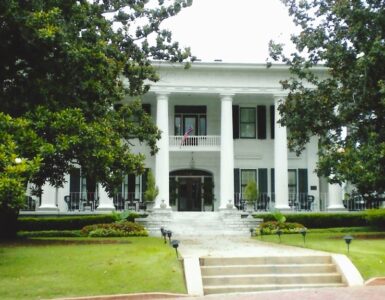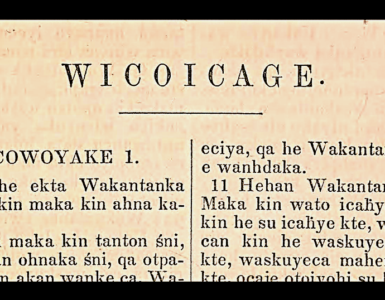 When we met I was told that everyone called him Scotty because of his homeland. He looked the part with his thick white hair, matching bushy moustache, glint in his eyes, and ever-present smile. If he had been Irish, I would say he had a leprechaun-like quality about him. During a conversation I made the mistake of calling him Scotch which elicited a polite but emphatic response, “Scotch is a drink; people from Scotland are Scots.” I purposed not ever to make that mistake again. His wife Ruth was always cordial as she showed guests needlework and trinkets from her homeland Sweden scattered throughout their home. I never asked them how a Swede and a Scot managed to get together, but they were a loving couple that were hospitable to all and faithful in ministry together.
When we met I was told that everyone called him Scotty because of his homeland. He looked the part with his thick white hair, matching bushy moustache, glint in his eyes, and ever-present smile. If he had been Irish, I would say he had a leprechaun-like quality about him. During a conversation I made the mistake of calling him Scotch which elicited a polite but emphatic response, “Scotch is a drink; people from Scotland are Scots.” I purposed not ever to make that mistake again. His wife Ruth was always cordial as she showed guests needlework and trinkets from her homeland Sweden scattered throughout their home. I never asked them how a Swede and a Scot managed to get together, but they were a loving couple that were hospitable to all and faithful in ministry together.
One time my wife and I were dinner guests of Scotty and Ruth. As we waited for the meal, I was seated in the living room chatting with Scotty when I viewed his study through a pair of glass doors, so I asked if he would show it to me. Setting in front of his desk was a nice wood book case with glass doors where he shelved his prized antiquarian titles. It was a nicely done piece and it was obviously made by hand. The touch of handicraft was observed in a few smidgens of misalignment and some saw kerfs that had passed their stop marks, but it had a wonderful patina with its surfaces colored by time and touch. Scotty informed me that his father had built the case many years ago in Scotland. When Scotty was a lad and the family finished eating dinner, the table was cleared so his father could turn it into a joiner’s bench for sawing, planing, chiseling, and fitting panels and joints to create furniture for the house, extended family, and selling to others. Seeing his father’s carpentry skills manifest in the bookcase was nice but knowing the story behind it made my experience even better. I could imagine the ripping sound of a sharp saw slicing through a board and the smell of fresh-cut lumber in the evenings as the family prepared for another day.
I asked Scotty what type of work his father did during the day and was informed that he was an undertaker. He paused with a grin and waited for a gasp or other indication of surprise from me, but instead I inquired, “Did he make caskets for his undertaking business?” “Oh no, he did not make caskets because he was not that type of undertaker.” I thought there was only one type of undertaker, so he told me another definition to add to my lexicon. When buildings were constructed an undertaker worked coordinating construction between the architect and the builder. It was the undertaker’s job to provide communications between the professions and see that the builder did not cut corners nor modify the architect’s design. After dinner and a nice Swedish dessert, the Hastings told about experiences during their annual trips to the Highland Games in North Carolina. It was a good visit and it made me feel more Presbyterian having spent the evening with a Presbyterian minister from Scotland.
I do not know when Scotty made his way to the United States but following college graduation from Wheaton he received his ministerial degree from the Bible Presbyterian Church’s Faith Theological Seminary. He pastored several churches in the B.P.C. until he entered the Presbyterian Church in America (P.C.A.) during its joining and receiving process with the Reformed Presbyterian Church Evangelical Synod (R.P.C.E.S.) in 1982. He was the stated clerk of the Presbytery of the Philadelphia Area for the B.P.C., 1942-1949. In 1946, Scotty began what would be a twenty-year tenure as Stated Clerk of the B.P.C. General Synod. Pastor Hastings was honorably retired by Covenant Presbytery (P.C.A.) in 1996 after it approved his resignation from a fourteen-year call to New Life Presbyterian Church, Munford, Tennessee. Scotty passed away in 2003. Ruth survived until just past her 100th birthday. In presbytery meetings if someone was needed to finish populating an ordination commission or take a seat on a committee, Scotty was often willing to help. He always had a word of encouragement for other ministers and provided wise assistance to many pastors during his numerous years of ministry. He was a kind and patient man.
In June 1954 the General Synod of the Bible Presbyterian Church met in its church in Greenville, South Carolina, pastored by Flournoy Shepperson. Stated Clerk Hastings was serving at his desk while the meeting was led by Moderator Linwood G. Gebb, minister of the church in Lakewood, Florida. The certificate below documents the reception of Rev. Hastings by the Presbytery of the Upper Midwest from the Presbytery of the Philadelphia Area. Even though the certificate documents transfer from one presbytery to another, it was completed at the synod meeting. This may have been a practice of the Bible Presbyterians or merely a case of convenience for presbytery clerks attending synod passing on paperwork because they were all in one place.

Barry Waugh
Notes–The header image shows Edinburgh from St. Anthony’s Chapel, 1831. For those interested in more information about Rev. Hastings and the Bible Presbyterian Church, the book A Brief History of the Bible Presbyterian Church and its Agencies, 1967, includes summaries of General Synod meetings along with group photos of the commissioners and other information. The portrait of Rev. Hastings and the certificate of transfer were provided by Director Wayne Sparkman of the Presbyterian Church in America Historical Center, St. Louis, Missouri. The map is from Philips Handy Atlas of the Counties of Scotland, 1891. According to the Oxford English Dictionary “undertaker” could be a synonym for “contractor,” but it seems in the OED that it can mean just about anyone who undertakes anything.





